We love where we live, but how can we build a Southern Georgian Bay that’s healthy, attainable and sustainable for future generations? People-centred cities worldwide are showing what’s possible, and we need to get started now.
by Mark Wessel
illustration by Shelagh Armstrong-Hodgson
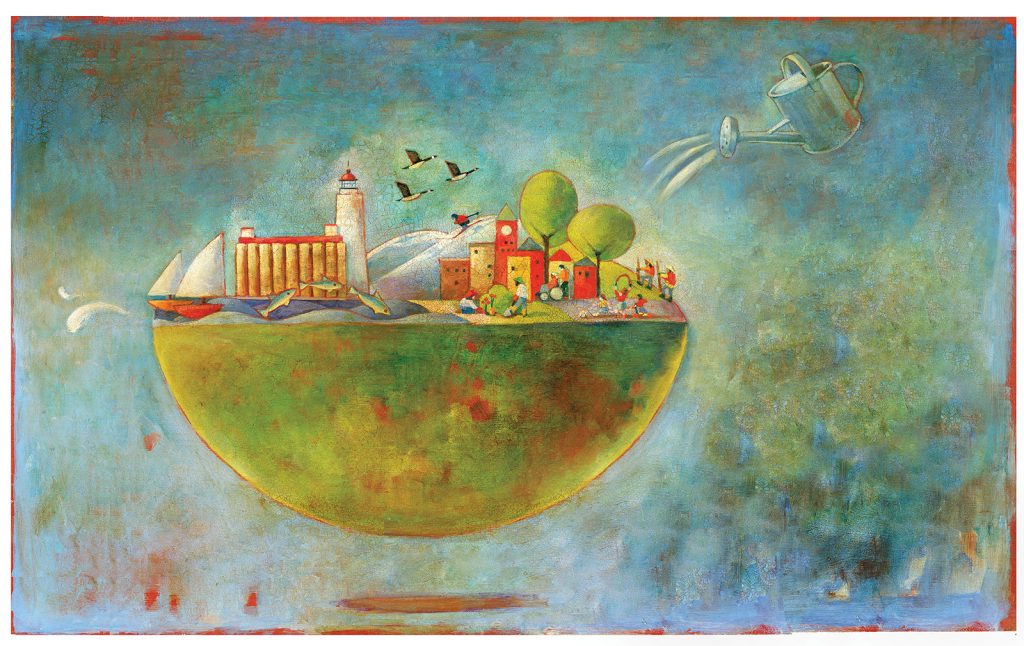
Many of us are drawn to Southern Georgian Bay by its natural beauty, so it goes without saying that residents here feel strongly about preserving what we have and, ultimately, ensuring that where we live is sustainable for future generations.
But everyone seems to have a different definition of what the word sustainable means, and the phrase ‘sustainable communities’ tends to conjure up even greater confusion. As important as environmental sustainability is, there is a lot more to sustainability than the environment.
The United Nations’ Sustainable Development Goals go a long way towards putting what true sustainability means into perspective. There are 17 objectives in all, with a target date of 2030 for achieving them, including such lofty targets as:
• no poverty,
• reduced inequality,
• decent work and economic growth,
• good health and wellbeing,
• clean water and sanitation,
• sustainable cities and communities.
“We need to think of the area as South Georgian Bay and not just 25 individual communities. Whether it’s people, places or programs, we need to do things on a more comprehensive, regional basis.”
Don May
The task of creating sustainable cities and communities is clearly one that needs to be top of mind at the local level. It’s a goal that includes such objectives as adequate, safe and affordable housing; safe, affordable and sustainable transport systems (including improved road safety); sustainable settlement planning; safeguarding of our cultural and natural heritage; and universal access to inclusive and accessible green and public spaces – in particular for women and children, older persons and persons with disabilities.
Not surprisingly, in talking to local officials, community leaders and residents with a shared passion for making our region a better place to live, all of these UN indicators are top of mind to varying degrees.
Sustainability on the Home Front
Local planning consultant Colin Travis doesn’t mince words when asked for his personal take on the word sustainability and what it means in the context of living in Southern Georgian Bay.
“I think a lot of people don’t know what sustainability is,” says Travis. “They have a generalized, almost meaningless definition, but they don’t know where it came from. And no one in their right mind is going to stand up and say, ‘I’m against sustainability,’ because if they did, you’d say they belong in a nuthouse.”
Through his own lens as a planner, sustainable communities are places that stand the test of time: communities that, over an extended period, remain vibrant and in strong demand as places in which to live, work and play.
“Successful neighbourhoods are usually medium density, mixed use areas in proximity to a downtown,” notes Travis. “Intrinsically and at a very basic level, the average person does not need to be told what’s best for them in terms of, I’d like not to have to use my car every day. I’d like to be able to walk when I can. I’d like to be safe. I like my sidewalks so I can push my stroller or my wheelchair.”
In support of this observation, Travis asks, “How often do you see these classic, old-town homes on ‘tree streets’ in Collingwood stay up for sale? Nine out of 10 times they won’t last long because owners can walk downtown, and they’re close to the schools.” Yet remarkably, he points out, the design for these streets pre-dates the province’s growth plan and the town’s official plan by 100 years.
Travis contrasts the walkability of these neighbourhoods with what he describes as geographically dispersed ‘leapfrog’ communities, sometimes built hundreds of metres away from servicing and where one has to hop in the car just to buy a bag of milk. But then, he readily admits, there continues to be a strong demand for many of these homes as well.
As Nathan Westendorp, director of planning and development services with the Town of the Blue Mountains, sees it, “We have to acknowledge the car will be here for a while, and there’s not an overall embracing of high-density [housing], especially in the Town of the Blue Mountains.” The solution as he sees it “comes down to having a diversity of housing. I think it’s important to have density in areas where people need it, so people can walk to Foodland or the bank or whatever. But we need to acknowledge there’s a place for bigger lots because of the demand for space or privacy.”
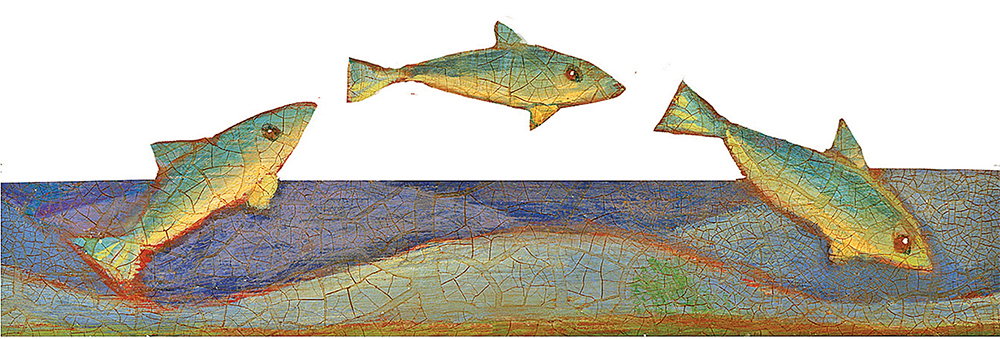
Striking the middle ground between urban sprawl and densification, Wasaga Beach has come up with a novel concept, which on the one hand acknowledges that several thousand homes in geographically dispersed neighbourhoods have already been approved, but on the other, the community’s growth moving forward will be driven by the concept of creating more densely populated nodes.
“If you look at the provincial growth plan, it talks about reducing sprawl and creating a better social living environment, and that speaks directly to livability,” says Doug Herron, manager of planning with the Town of Wasaga Beach. “In that regard, we know that over the past 20 years, the town has grown to low density. But we know our future is in high-density nodes.”
These nodes are characterized by walkability and a variety of housing forms; for example, the Main Street Area node encompasses Beach One and Two, Main Street and River Road West.
All of this is predicated on how Herron says the Town of Wasaga Beach is evolving. “We have a higher demographic of people over 50 living in lower-density areas. And we know that older age group will continue for a while. But we are also transitioning to a family town. And we will get to that with nodes where we strive to create more complete communities” characterized by walkability and ready access to everything from essential services such as grocery stores to local schools, with or without the need for cars.
Making Sustainable Attainable
The concept of creating more walkable, more densely populated communities delivers multiple benefits: among them, less reliance on cars and the related benefits of improved air quality; more active, fitter residents; lower healthcare costs; and better social connectivity. All of this sounds good on paper. But communities within Southern Georgian Bay must also contend with the dual questions of how to fast-track the creation of more densely populated communities and what we can do to make these communities more attainable.
Attainable housing is a term that has cropped up in the lexicon of local planners and speaks to the need to not just create more affordable or more social housing – which in itself is important – but rather, the need to build homes for families or couples making less than $100,000 per year. It’s certainly a challenge that’s top of mind with Randy Scherzer, director of planning for Grey County.
“There’s a great need for people in what we call ‘the missing middle,’ ” notes Scherzer. “It’s not just about social housing for those making less than $30,000 a year. It’s also about those between the $30,000 and $100,000 a year income level; people working in the area, many of whom can’t afford to live here.”
According to Scherzer, there are a host of barriers to attainable residential development within the area, including the cost of land, development charge costs, property taxes, NIMBYism (not in my back yard), and local government policies that don’t support a mix and range of housing types.
In addressing these challenges, Scherzer says Grey County is exploring a variety of options. “To me, intensification may look different here than, say, the GTA. It could be providing options for secondary units like basement apartments or additions to a house. It could be a great way to address the need for more rental properties without changing the overall look and feel of the community.”
Perhaps to appreciate just how important attainable housing is when it comes to quality of living and the overall sustainability and vibrancy of a community, one needs to look quite a bit farther afield … to Vienna, Austria. This year, for the tenth consecutive year in a row, Vienna has been ranked by global consulting firm Mercer as the number one city in the world in its quality of living ranking.
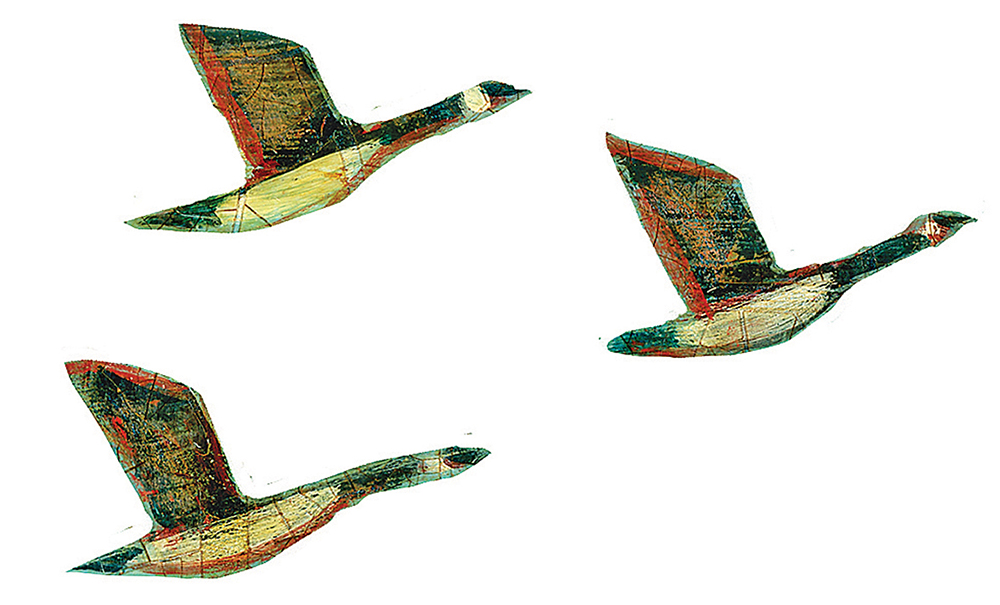
In Vienna, one of the prime drivers of quality of living has been the city’s decades-long commitment to ensuring that residents can actually afford to live there. With over 220,000 subsidized homes and over 500,000 tenants, the city proudly claims to be ‘Europe’s largest landlord.’
“Adequate housing is a basic human right,” observes Vienna director of urban planning Thomas Madreiter. “It’s of utmost importance for quality of life and living together peacefully.”
Apart from the funds Vienna allocates to make rent more affordable for their ‘missing middle,’ another distinction is that with all new development, the city mandates that a healthy percentage of these new homes be designated for residents of varying incomes.
From a North American, if not a local perspective, all of this may seem somewhat like ‘pie in the sky’ – after all, Vienna is a much larger city that has been involved in subsidizing housing going back to the First World War – until you talk to someone like Joe Deschene Smith, one of the partners with Toronto-based Trillium Housing.
“Labour shortages are connected to housing and transportation. And then keeping our high school and university and college students in the area. So it’s a continuum and we can’t talk about any one thing in order to solve it.”
Rosalyn Morrison
“Conventional thinking is that you can only help a family earning a modest income, say $60,000 a year, with some form of subsidized rental. But we’ve proven at our project, The Loop in Toronto, that with the same dollars we can house four or five families with the same income of $60,000 a year and at the same time those families can build equity in their homes.”
Trillium’s formula is to build new, entry-level residential projects on land often purchased from local municipalities – typically infill sites close to local amenities. As many as 30 to 40 per cent of the homes are set aside for ‘missing middle’ homeowners who qualify for a second mortgage that is provided at zero per cent interest, with no payments until the home is sold, making the month-to-month carrying costs much easier to handle. The net effect is to lower the qualifying barrier for those in the missing middle. And these homeowners live alongside other purchasers with higher family incomes, so in addition to the ‘zero’ second mortgage, there is zero stigma attached to where they live, because the owners integrate with the rest of the community.
Connecting the Dots
Even if we find the magic formula for more attainable housing in our area and even if greater densification occurs within our downtown areas, the fact remains that compared to other parts of the world, our residents are also geographically dispersed. And it isn’t as if we’re going to suddenly bulldoze the subdivisions on the perimeter of town and have everyone relocate to the walking core.
To put things into perspective, according to the province’s 2016 census, there are 61 residents per square kilometre in Simcoe County (no doubt skewed by Barrie’s population of 153,000) and a mere 20 per square kilometre for Grey County, compared to 1,108 for Peel County and 4,149 for the GTA.
So how do we connect the dots – the towns, villages and rural homes across Southern Georgian Bay – in the interest of creating a greater sense of community, which in turn ties back in with quality of living and promoting a more sustainable way of life? Don May, a retired planner who remains actively involved in the community through such organizations as the Institute of Southern Georgian Bay, says we need to work together better as an area.
“We need to think of the area as Southern Georgian Bay and not just 25 individual communities,” says May. “Whether it’s people, places or programs, we need to do things on a more comprehensive, regional basis. We’ve done some of that, such as the bus service from Wasaga Beach to the Village at Blue Mountain. And the Blue Mountain Foundation for the Arts has gone beyond one town, where they’re starting to have events and exhibits in places like Stayner and Thornbury. There’s also the South Georgian Bay Music Foundation, which is coordinating events throughout the region. And with the funds from that, they’re helping the schools and kids learning music.” Whether buses or bands, the key, he says, is to have a comprehensive approach where “everything is connected.”
“If you look at the provincial growth plan, it talks about reducing sprawl and creating a better social living environment, and that speaks directly to liveability.”
Doug Herron
It’s also not an unreasonable observation that we as residents need to be better connected to the infrastructure we already have in place. For instance, whether due to a lack of awareness, desire, or the possible stigma of riding on a bus, or whether it’s simply our longstanding dependence on cars, it’s not uncommon to see almost-empty buses zoom by in communities such as Collingwood. Why, for example, aren’t more people taking advantage of the bus link between Collingwood and Blue Mountain Village, to prevent drinking and driving? To paraphrase Gil Penalosa, the inspiring Toronto-based urbanist, at least part of the answer could be tied to where our priorities currently lie versus where they should be. The mark of a successful community, he says, “isn’t one where all of the poor drive cars, but where the rich use public transit.”
Aside from the social connections area residents need to make with one another in order to leverage our collective strength, Don May is cognizant of the need for better physical connections as well, with Blue Mountain Road being top of mind. “People come here to cycle and suddenly find the trails aren’t connected. For example, you still can’t bike from Collingwood to Thornbury [along Blue Mountain Road].”
Trails as the Road to Sustainability
Southern Georgian Bay’s extensive trail system is a remarkable asset that few communities in Canada or pretty much anywhere else in the world can match. Add to this the fact that there are an abundance of quiet, scenic country roads and it’s no wonder the area has become a mecca for cyclists, both locals and visitors, who can be seen out and about on road bikes, mountain bikes and ‘townies.’
So, on the one hand our roads and trails are a major strength, but due to the gaps that exist, they’re also a source of weakness in terms of physically connecting communities. Our current reality of getting from A to B between various communities by bike remains a challenge due to a host of road and trail gaps. And protected bike lanes on our roads – no, painted white lines don’t count – are virtually non-existent.
Michele Rich, the executive director of the Environment Network, is a long-time biking advocate dating back to the late ’90s, when she says “the bike network really took off.” In the years since, she has frequently advocated for protected bike lanes. “Year after year, we’ve always said we need protected bike lanes, but that sort of thing takes political will,” says Rich. “It’s not about knowledge or anything. It’s someone standing up and saying, ‘you know what, we need to do this.’ ”
A small consolation, says Rich, are the rumble strips on Blue Mountain Road, which serve the dual purpose of warning drivers and cyclists when a vehicle is beginning to veer off the road. “They save lives,” she notes. “But the strips were only the result of a lot of bureaucratic pressure. We had to lean on a few people.”
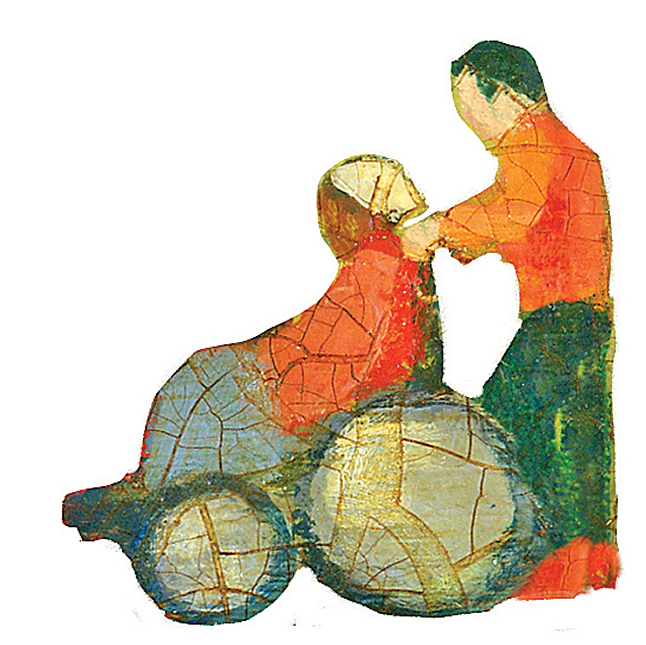
In many parts of Europe, bicycles are the great equalizer. Copenhagen is world famous for its bike roads, highways and even dedicated bike overpasses, where 41 per cent of all trips are made on bikes. Meanwhile in Utrecht, a university city of 360,000 in the Netherlands, they’re building the world’s largest bike parking garage, capable of handling over 30,000 bikes. Both cities began with a humble goal, but had a long-term vision coupled with the allocation of an annual budget, and these yearly budgets dedicated to bike infrastructure remain an integral part of their urban planning to this day.
For these and other bike-friendly communities, the rationale is to promote a mode of transit that enables people to easily and economically get across town. And those benefits are equally relevant here, whether bikes are being used for recreation or by residents in outlying neighbourhoods – even the more affluent ones. A growing number of people want the option of being able to bike into town as a more economical and healthy means of transportation.
As for those naysayers who say Canada is different because of our weather, the reality is that cities such as Copenhagen, and for that matter, much farther north in Oslo, have an established snow-clearing strategy and infrastructure in place. When it snows, the bike lanes and sidewalks are cleared first – before the roads.
Apart from bikes, Rich is also a passionate supporter of promoting more walking, especially in school districts. “If you’re looking for specific initiatives, one thing we need to grow throughout Southern Georgian Bay is getting kids to walk to school. We need to encourage people to use public transportation. And encourage people to stop idling their vehicles, even in drive-throughs.”
Together, these initiatives – the emphasis on more walking, biking and use of public transport as alternatives to using cars – have become a global phenomenon, due to the air quality issues associated with motorized vehicles. For example, London, England is currently contemplating a complete ban on idling cars in school districts due to the associated health risks to which children are particularly vulnerable.
A More Animated Approach
Apart from the health aspect of encouraging more people to get around by foot, Marg Scheben-Edey, a local realtor who was involved many years ago in the creation of Collingwood’s Vision 2020 project, says it’s time to do a proverbial ‘reset’ in communities throughout Southern Georgian Bay with respect to long-term goals.
“I think we need a new visioning project that should start with a review of Vision 2020, followed by a community indicators project that establishes a baseline of where we are, and then a Vision 2040 project looking at where we want to be,” says Scheben-Edey. “We have a huge opportunity to animate our public spaces with such things as more benches, public art, bike stands, split-stream garbage cans and wayfaring signage. And one of the things I suggested going back to Vision 2020 that I think is still a good idea, is pop-up barriers you can use to block some of our downtown roads, so that you can experiment during festivals and events, and maybe even every weekend or every other weekend.”
There is yet another fundamental change that many of our communities seem to be overlooking: simply making it easier for walkers to cross the road, and in an ideal world, giving priority to pedestrians over cars.
Forget chickens; how do you get someone from Southern Georgian Bay to cross the road? On closer examination, it’s not always easy.
Why, for instance, is there not some sort of solution for pedestrians and cyclists to safely cross Highway 26 on the Georgian Trail (a prime example is just east of Thornbury), instead of having to wait while cars pass through, essentially taking their lives into their hands? The easiest solution would be a crosswalk, but an even better solution would be an overpass or an underpass, to make it safer and easier for pedestrians and cyclists to continue on the trail without having to deal with traffic.
And there are lots of other questions. Why do the signs on downtown Collingwood’s crosswalks tell pedestrians to ‘yield to cars’ instead of the other way around, as in the case of downtown Paris, Ontario? Why are there so many busy intersections where the ‘walk’ signal doesn’t come on automatically, and if you press the ‘walk’ button after the light has turned green, the ‘don’t walk’ signal stays on? Is that the sign of a community built for people or for cars?
Interestingly enough, many of the elements Scheben-Edey espouses are being incorporated in Oslo, Norway, which is garnering worldwide attention as one of the first major cities to establish a car-free downtown core, an area of about 1.3 square kilometres.
Despite pushback from motorists and shopkeepers, the reality is that vehicles aren’t completely eradicated from the downtown core; Oslo is simply transforming the area into a place that is putting people first over cars. So some of the four-lane streets have been converted into pedestrian-only, some have been trimmed to two lanes or even a single one-way lane in order to accommodate wider pavement for walking, and the area boasts a bevy of pedestrian-friendly installations including benches, public washrooms, drinking fountains, games, play areas, and pop-up arts and culture exhibits.
Local artist and entrepreneur Anke Lex is understandably a big proponent of more public art in Collingwood, in order to significantly enhance quality of living while expanding the horizons of both residents and locals. “I think the more public art, the better the community you have,” maintains Lex, who loves the idea of including more ‘pop-up’ art as part of the mix. “I like the element of surprise, so that when you see it, you have an immediate reaction to it. And it doesn’t just have to be art; it could be something like a dance demonstration.”
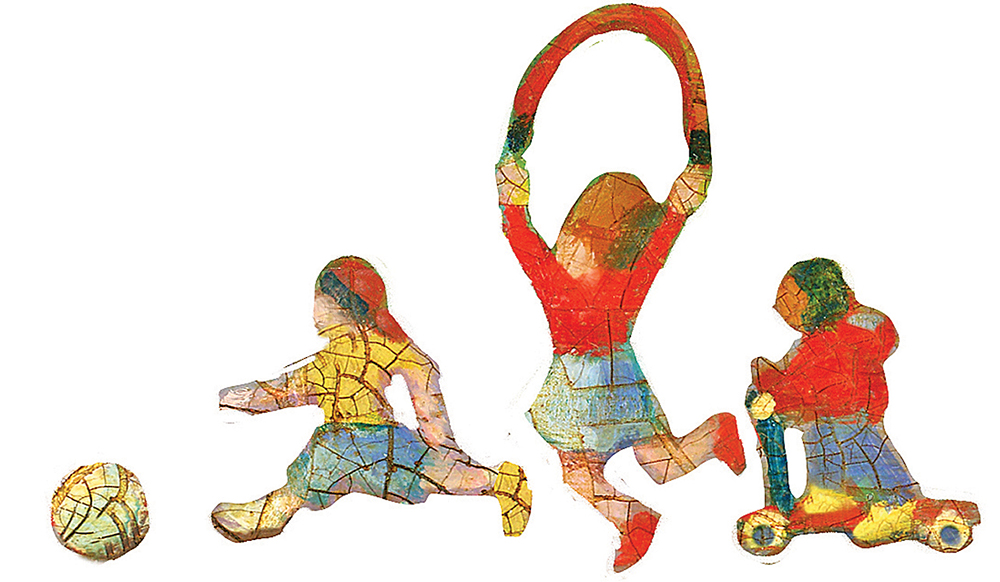
Lex is convinced that public art is one way of breaking down social barriers to art that might not normally occur when it is hidden away in galleries and museums. “People who like the arts will always go to them. But [with impromptu public art] it’s an opportunity to change people who haven’t opened themselves up to it. And that can change you as a person.”
Yet another way of introducing art to the everyday citizen is to showcase more art in nature, which is a natural fit for this area, says Lex. “Having art in nature is particularly exciting because you can really embellish on the thoughts of wellbeing and making nature more liveable to people.”
“There’s a great need for people in what we call ‘the missing middle’. It’s not just about social housing for those making less than $30,000 a year. It’s also about those between the $30,000 and $100,000.”
Randy Scherzer
Outside of the city core, another distinguishing feature of Oslo that could serve as a potential model for this area, is a sculptural park called Ekeberg Park. A short tram ride from the downtown, the park is situated on a hillside overlooking the city with a view not unlike the Niagara Escarpment. Within this densely treed setting, a network of trails that snake through 25 acres of land showcase over 30 statues and sculptures ranging from classic to modern works of art. And new statues are being unveiled on a regular basis.
Art in this type of setting yields multiple benefits, from encouraging people to get more active and cultivating an appreciation for the arts, to encouraging greater social interaction and reinforcing the importance of preserving and maintaining the area’s natural beauty.
Thankfully, with the art world being so versatile, the scale and cost of such initiatives can vary considerably. For instance, one innovative yet cost-effective way to showcase both writing and visual art is an initiative called StoryWalk, comprised of a series of ‘story pages’ installed along stretches of trail. StoryWalks have been installed in 12 countries such as Germany, Korea, the UK and Canada, including locally in Collingwood along the Train Trail.
The current installation in Collingwood, which is on until this fall, tells the story of Nokomis Josephine Mandamin, an Anishinaabe grandmother who launched the Mother Earth Water Walks back in 2003 to share the message of how precious our water is as a natural resource and source of life.
Creating a More Resilient Community
Whether it’s protecting nature, celebrating the arts, creating more vibrant downtown cores or doing a better job of connecting people through everything from infrastructure enhancements to social programs, there is an overarching word that applies to all of these initiatives: resiliency.
Rosalyn Morrison knows a thing or two about resiliency, having worked on Toronto’s Resilience Strategy as part of the 100 Resilient Cities organization and more recently, as a board member of the Institute of Southern Georgian Bay, the same ‘think and do tank’ that Don May is involved with.
Resiliency and sustainability are closely linked, because if a community or region isn’t resilient in the face of a multitude of stresses – from climate change to social inequality – then it becomes less sustainable and ultimately, less liveable.
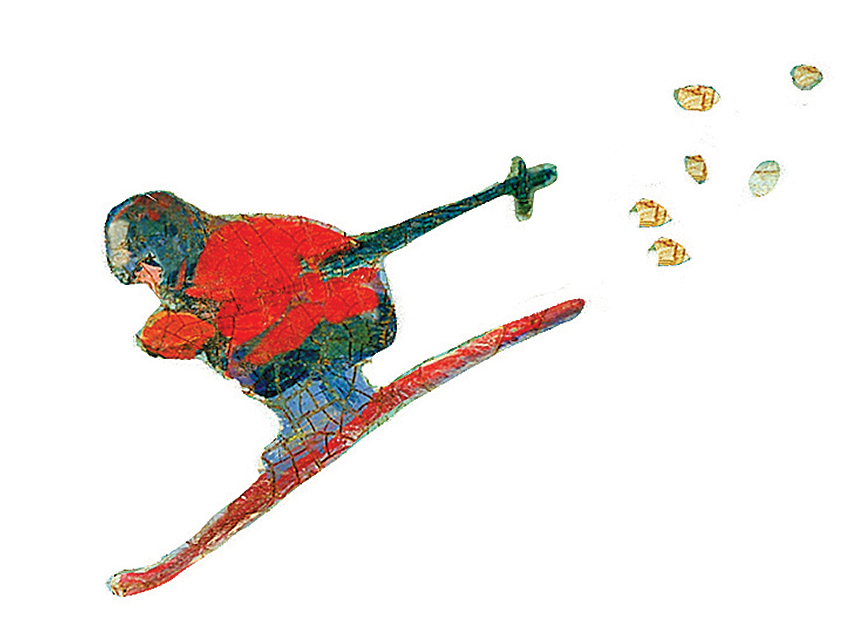
“I think we should underscore the fact that things are interconnected,” Morrison says. “For instance, the crisis of a labour shortage in the region, using the Village as an example and the fact that they can’t get people to work. Or with the building boom where it’s difficult to get skilled labour. Labour shortages are connected to housing and transportation. And then keeping our high school and university and college students in the area. So it’s a continuum and we can’t talk about any one thing in order to solve it.”
She concurs with May’s assessment that Southern Georgian Bay needs to have a greater sense of place that transcends local government and borders. “It’s time we have citizen-engaged discussions and build strategies together in order to address the challenges of our time and co-create what our community will look like in 20 years.”
Encouragingly, Morrison says that unlike some major cities that are “paralyzed” by the challenges that lie ahead in seeking to build a more resilient, more sustainable community, “we have the opportunity to mitigate those challenges now, so that in the future we’re in good shape.”
Where We Go from Here
With all of the complexities and challenges associated with creating a more sustainable, more liveable place to live, it can seem like a daunting if not dispiriting task that lies ahead … until we begin to recognize what we have working in our favour.
In terms of human resources, Southern Georgian Bay is already blessed with a number of individuals with varying backgrounds and levels of experience who could potentially contribute to a more broad-based sustainability initiative for this area. Many of these individuals are also well connected through their professional networks across Canada and abroad.
We can also learn a great deal from some of the more inspiring initiatives other communities around the world are implementing, which we could potentially replicate in some shape or form here. Using those communities as a jumping-off point, we can be inspired by their best practices, develop a greater sense of place (as opposed to neighbouring communities working in silos), tackle sustainability challenges from multiple vantage points and sets of criteria (it’s so much more than the environment), and adopt a long-term, multi-generational mindset.
It’s a path we need to go down not just for ourselves, but for our children, our grandchildren and beyond if we truly care about making Southern Georgian Bay a great place to live for generations to come. ❧
Continue Reading: A World of Opportunity











